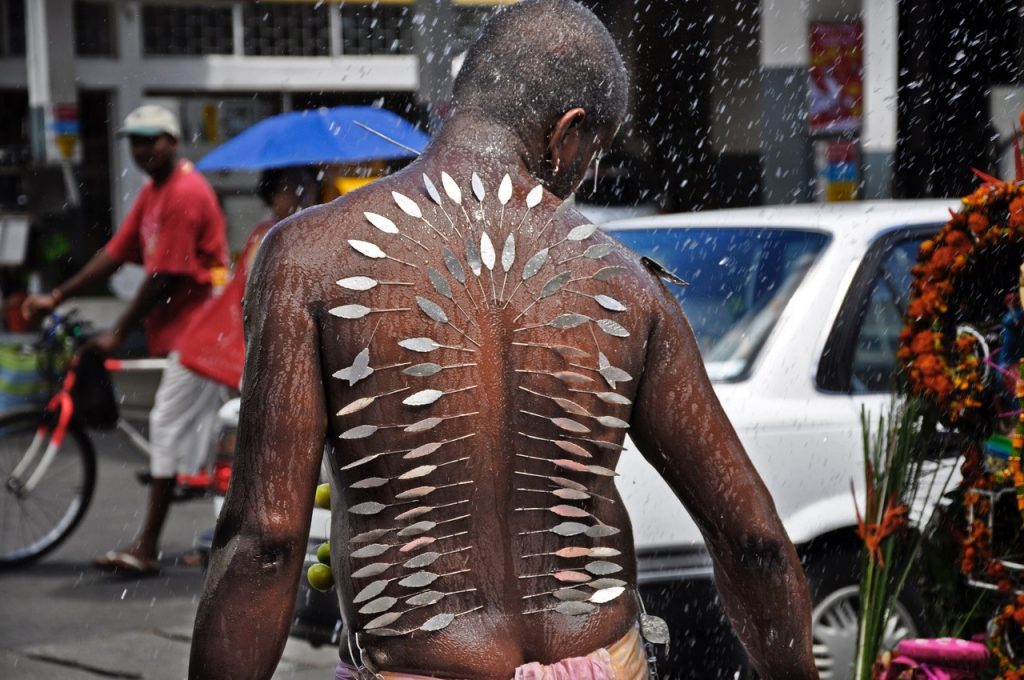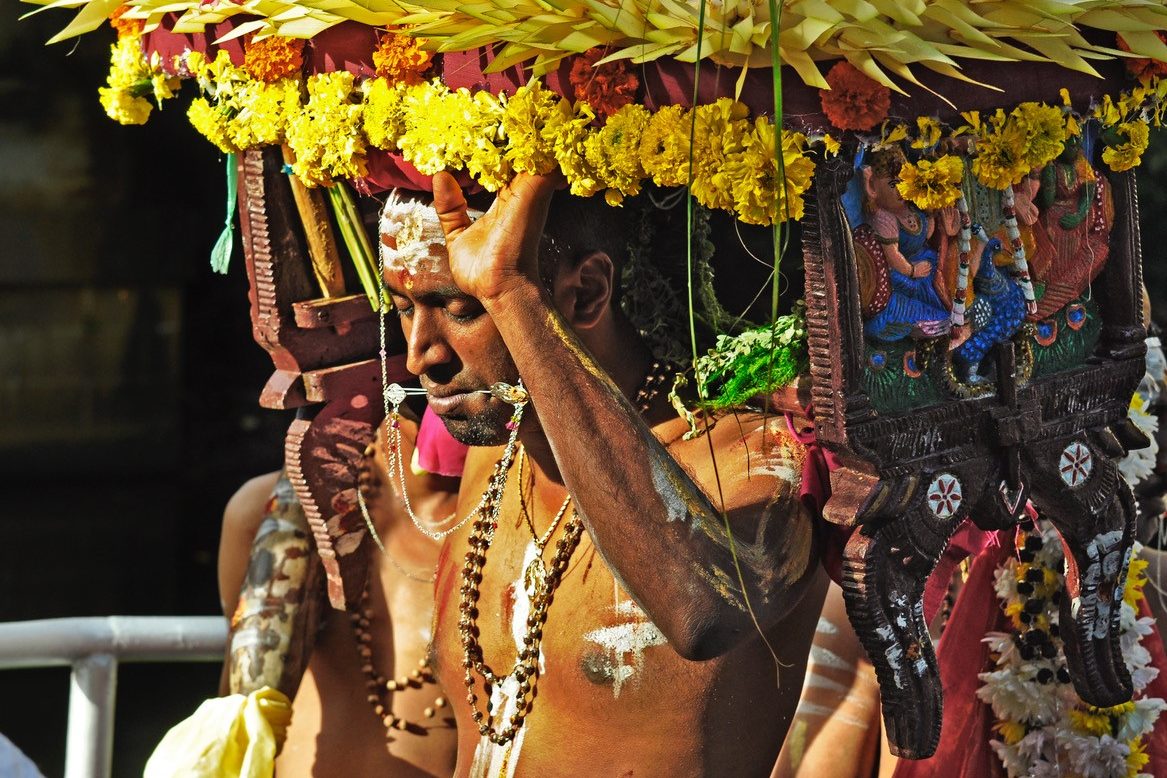It seems unimaginable that intense, self-inflicted pain can result in an individual feeling much better, but that was the case with a longstanding ritual studied by researchers at the University of Connecticut.
Their study, published in Current Anthropology, reports significant positive psychological outcomes and increased perceived well-being in participants who performed an extreme annual ritual as part of a national celebration.
Dimitris Xygalatas, assistant professor of anthropology, studies all kinds of rituals and tends to see them everywhere in daily life. However, the bloody physical rigor endured by Tamil Hindus in Mauritius is very different from the holidays and sports rituals familiar to those in the United States.
“Ritual is something that has no clear function, we just do it because we do it,” says Xygalatas, whose findings may provide insight into other extreme behaviors, such as ultramarathons or fire walking. “The reason they have survived is because they have specific benefits.”
The researchers designed a real-life experiment to measure the psycho-physiological responses of those who participate in kavadi attam, not only during the ritual, but for weeks before and after the event. They did this by enlisting some 37 participants to wear a non-intrusive sensor, much like a Fitbit, as an armband.

The festival honors the Hindu God of war, Murugan. As the story goes, Murugan was caught in an epic battle with a demon where he used a spear to ensure his victory, says Xygalatas. In deference to him, Tamil Hindus across the world pierce and puncture their skin with skewers and needles. Then they begin a pilgrimage over many miles uphill to a temple, all the while pulling altars connected to their bodies.
Even for the week prior to the festival, the participants undergo deprivation in the form of fasting, sleeping on the floor, and abstaining from sex and other pleasures, to ensure that they are sufficiently ready for the ordeal ahead.
Designing the experiment was very challenging, Xygalatas says. “It was crucial to use unobtrusive methods and not cause any disruption to the ritual or major alteration to the participants’ behavior. We used an armband that is no heavier than a wristwatch, is invisible to observers, and can be worn for a week on one charge. People get used to it and quickly forget they even have it on. In fact, at the end of each period we often had to remind them to remove it.”
With the armbands, the team measured physiological signals including stress, skin temperature, heat flux, heart rate, and sleep efficiency. Researchers also measured the weight of the altars and the number of piercings or skewers each participant had inserted.

They found a significant increase in the participants’ assessment of their health after the ritual. In fact, the more pain they had endured during the ritual – the more needles they put through their body and the more energy they expended – the greater those benefits were.
This might help explain why those with chronic illness had higher odds of being in the group exposing themselves to the most pain. In addition, participants of lower socio-economic status and those with more severe health conditions seemed to engage in more painful rituals than those higher on the social ladder or in better health.
Researchers also found the ritual leads to a cohesive feeling within the community and a commitment to community on the part of the participants.
Xygalatas plans to continue studying the kavadi attam ritual and how it increases participants’ quality of life.
“Traditional cultural practices that may strike outsiders as strange may actually have tangible benefits, by helping their practitioners cope with adversity,” he says. “Although, of course, these practices should not be treated as a substitute for biomedical interventions, we should not dismiss their complementary utility for health management, especially in contexts where psychiatric or other medical interventions are either not widely available or are associated with stigma.”
The study was funded by the Interacting Minds Centre at Aarhus University, Denmark; the LEVYNA Laboratory for the Experimental Research of Religion at Masaryk University, Czech Republic; and the Medical School of the University of Exeter, U.K.



